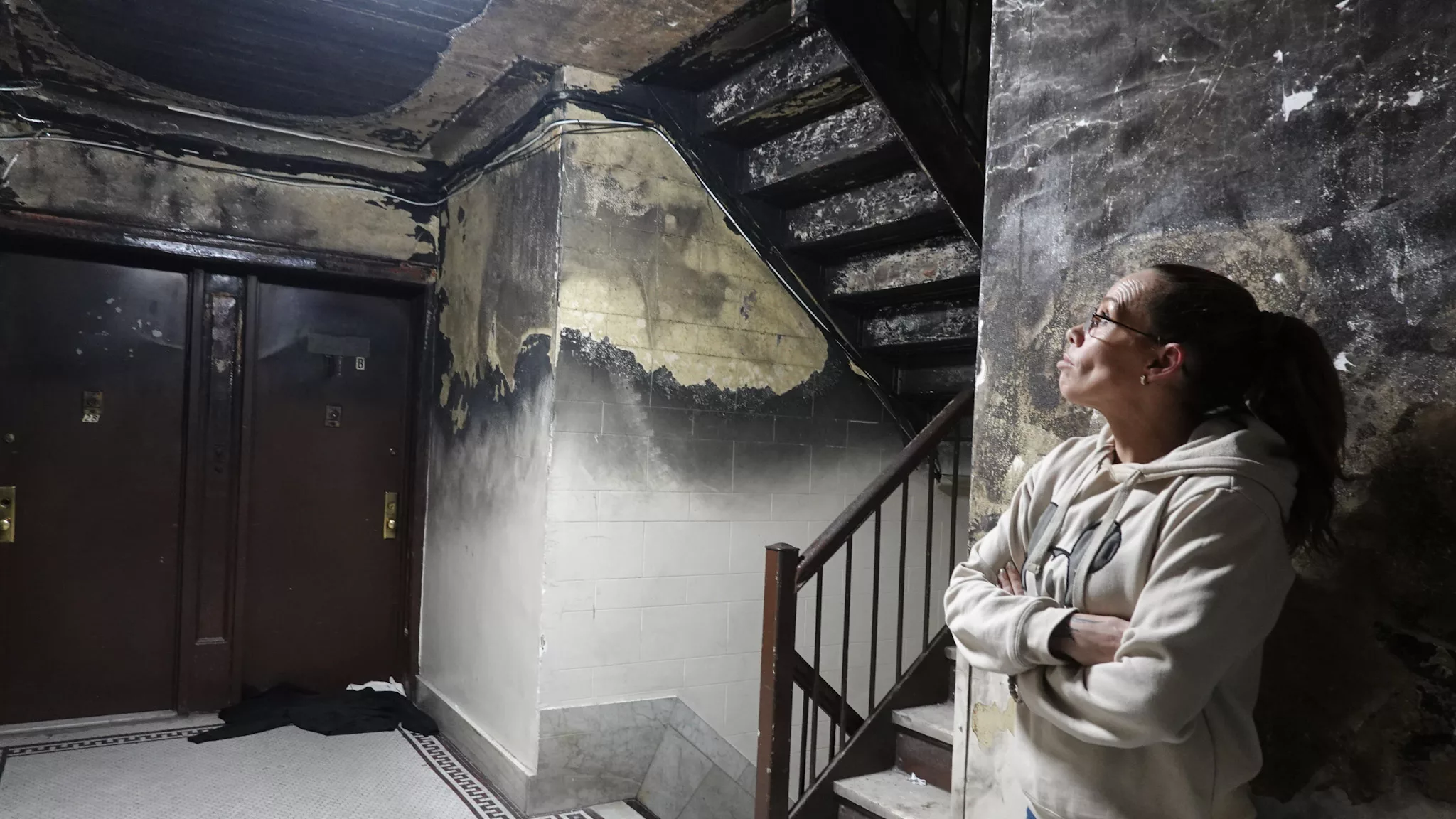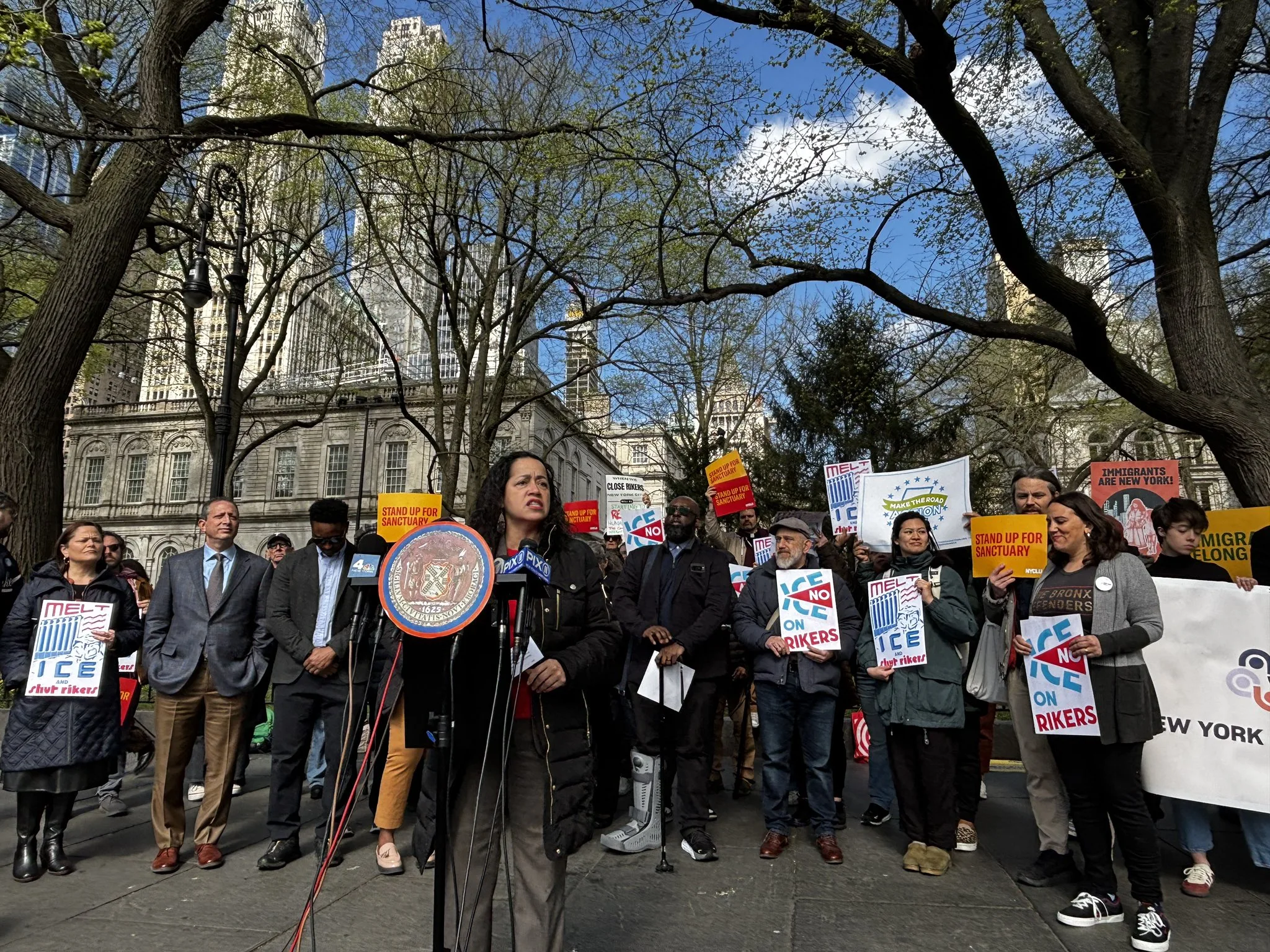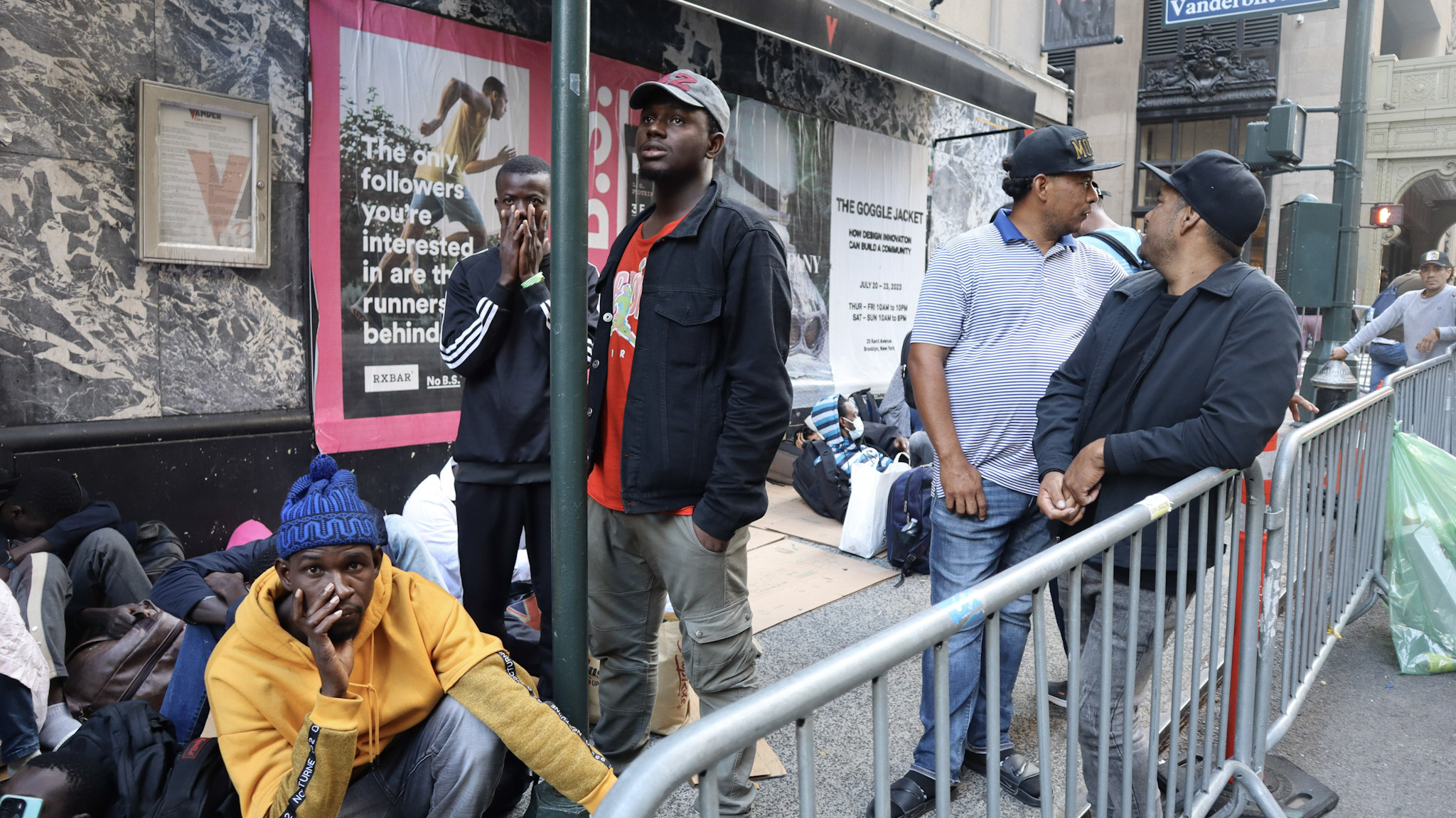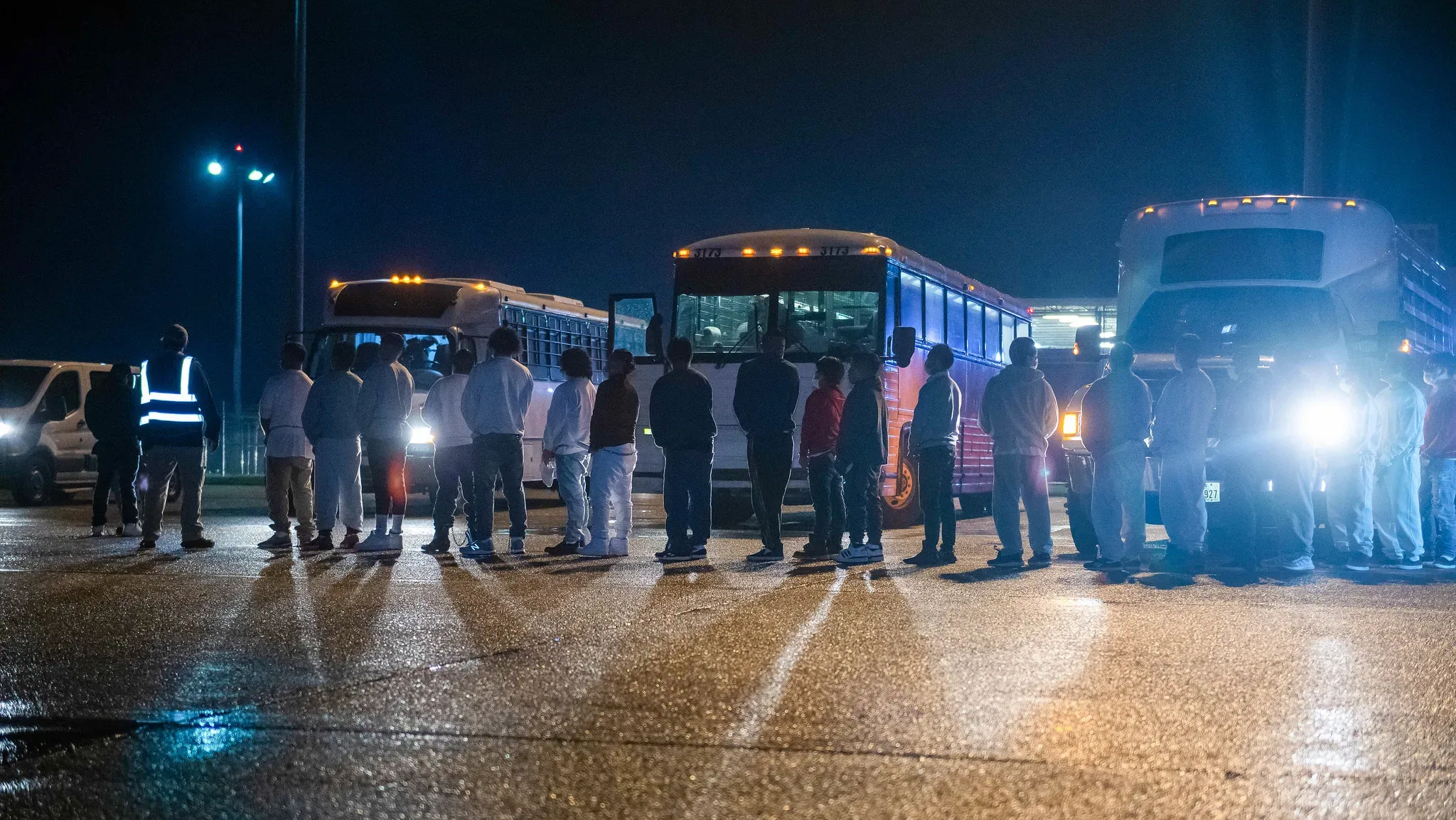COLONIE – On a Thursday morning at the Albany County Correctional Facility, men and women in bright orange jumpsuits came and went as guards spoke curtly into radios.
The scene was unremarkable for a county jail, except for one major difference: most of the detainees brought out from the facility’s secure area were migrants. Many were arrested in recent weeks and are now seeking asylum.
Hundreds of immigrants have been sent to this facility in recent weeks – up to over a hundred per week – the majority of them apprehended at the border. The jail has held immigrant detainees on and off for years, usually in the low single digits, but the current population of 320 immigrants is way above anything it’s ever handled before.
The detainees were being met by volunteer attorneys coordinated by the New York Immigration Coalition, the immigration law clinic at the Albany Law School, and the Legal Project. They ranged from seasoned immigration lawyers to those speaking with an immigration client for the first time. They had answered the call put out by local and state groups in response to a sudden influx of migrants to the jail, and volunteered in shifts of about four or five at a time. Interpreters were on hand to help them communicate with the asylum seekers as they prepared for credible fear interviews — the first step in building an asylum case in the United States.
They were brought to the jail by Immigration and Customs Enforcement as part of an agreement that the county has with the U.S. Marshals Service which allows other federal agencies to use the bed space.
Some of the detainees were seeing an attorney for the first time in the weeks since they’d been detained, while others claimed that they already have outside representation. The only way for the triage team of lawyers to know what stage each detainee is at in their legal process is to speak with them, and not everyone is forthcoming. One group of Mandarin speakers claimed not to remember how they had gotten across the border. The attorneys worried that they may have been victims of labor trafficking.
It wasn’t just Spanish and Mandarin that the attorneys came up against. In the roughly four hours that Documented observed the consultations, detainees were also interviewed in Punjabi, Hindi, and French. One migrant only spoke the Afroasiatic language of Tigrinya, and had to be turned back because no one could communicate with him.
Several of the migrants have been separated from family members with whom they had crossed the border, according to Camille Mackler, the director of immigration legal policy at the NYIC and one of the effort’s organizers. These family members can be siblings, spouses, or even children. Albany County Sheriff Craig Apple said he had been told by ICE officials that no parents separated from children would arrive at the facility, but some had anyway. One woman who was interviewed by attorneys on Thursday said she had her children taken away at the border.
ICE agents also have access to their detainees, though not to the ones on the criminal side of the jail. The sheriff briefly considered entering into an agreement, known as a 287(g), that would have deputized some of his officers as immigration agents, but decided against it once he found out more about the program.
Agents will sometimes enter to give them updates on their status and whether they’re going to be moved, or to try to convince them to voluntarily sign away their asylum claim and agree to be deported, according to the attorneys. At least one detainee interviewed on Thursday had already agreed to removal from the country. Mackler said she’d heard that an ICE agent had told a detainee that “the lawyers, they don’t want to help you,” in advance of an intake meeting.
One asylum-seeker, a woman who gave her name as Lorena, agreed to speak with this reporter only after he removed his jacket, in an apparent attempt to confirm he didn’t have a badge or a recording device.
Lorena said she had been arrested weeks prior near San Diego and been shuttled around since. She spent eight days in a facility in California before getting flown to Arizona, where she spent thirteen days. She was then taken to Albany, where she’d been for about two weeks. For much of that time, she’d been sick and losing weight.
“I was spending days with a headache. I started seeing blurry, I had a pain behind one of my eyes,” she said. She stopped being able to keep food down and suffered from constant diarrhea. She said the guards’ solution was to offer her Gatorade. Lorena claimed that one guard at the Albany jail had told her she might have to vomit blood to get expedited treatment, though the same guard later took her to the medical staff to get treatment.
A couple of the immigrants told Documented that they worried about their proximity to the jail’s general population of inmates in the criminal justice system. ICE detainees are not supposed to co-mingle with criminal inmates, but in what is a relatively small jail in the midst of an unprecedented wave of ICE detainees, contact between the two populations seems almost unavoidable. Lorena expressed fear of two criminal detainees in a cell across the hall from her, one of whom she said had yelled “F*ck you immigrants!” at her.
Apple said he was aware of at least one ICE detainee who was in the jail’s general population because he had been involved in violent criminal activity before being detained by immigration agents. Apple was not aware of there being significant concerns about intermingling of the jail’s different inhabitants.
Albany is not the only New York county with a Marshals agreement that could be used by ICE, but it is the only county jail in the state to have received such a dramatic inflow in recent weeks, in part because Apple himself requested that his jail be used for the purpose. He says he received an email about six weeks ago that was getting sent around by the New York State Sheriff’s Association about a coming surge of detained immigrants. Apple asked that they be brought to Albany, where he believed they would be better served than in other detention facilities.
The sheriff allows immigration attorneys unfettered access to the migrants in his jail with the hope that they can get legal representation in their cases — many immigrants do not, as there is no right to an attorney in civil immigration proceedings as there is in criminal cases — and is considering putting phones in some of the meeting rooms to facilitate translation and legal consultation.
It’s not entirely clear why these detainees were moved by the hundreds to New York, though there are rumors that it might have been to open up space in facilities closer to the border in preparation for family detentions, which the federal administration wanted to replace family separation with. A federal district judge recently shot down the government’s attempt at long-term family detention.
The ultimate goal of these screenings and preparatory sessions is to help the migrants get legal advice and prepare for credible fear interviews, a process made immensely more difficult in recent days by new government directives designed to exclude asylum-seekers who profess a fear of domestic or gang violence, or who crossed the border illegally. These changes would affect the vast majority of asylum-seekers from the border.
“We don’t know if they’re going to do interviews by phone or in person,” said Legal Project attorney Isabelle Thacker, explaining that it made it difficult to present evidence when the asylum officer wasn’t even present in the room. The best the attorneys could do was help their clients understand the strictures of asylum requirements to be their own best advocates.
Many of the detainees will fight their cases despite the long odds of success if it means a chance to stay in the United States.
“I won’t desist,” said Lorena. “I’ll die first.”
UPDATE, JULY 16, 2018: This story has been updated with new information.














